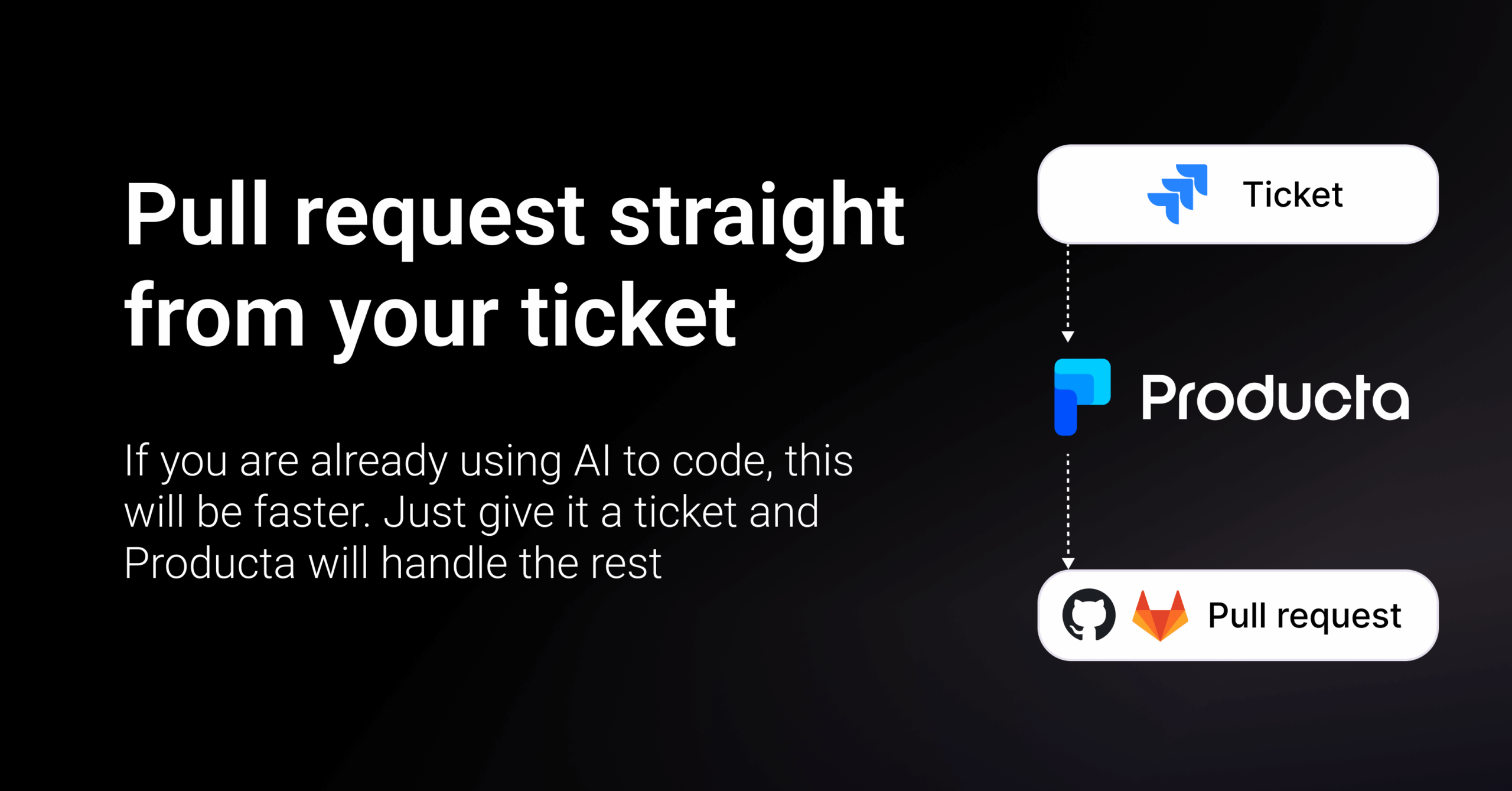
Table of Contents
Overview
Tired of spending countless hours translating project tickets into actual code? Producta emerges as a game-changer in the realm of AI-powered development assistants. This innovative tool automates the software development lifecycle by seamlessly transforming Linear or Jira tickets into fully implemented GitHub pull requests. Let’s dive into how Producta can streamline your workflow and boost developer productivity.
Key Features
Producta boasts a robust set of features designed to automate and accelerate the development process:
- AI-driven ticket clarification: Producta intelligently analyzes and clarifies ticket requirements, ensuring a clear understanding before code generation begins.
- Automatic code generation: The core of Producta lies in its ability to automatically generate code based on the clarified ticket details, significantly reducing manual coding effort.
- Seamless integration with Linear, Jira, and GitHub: Producta integrates flawlessly with popular project management and version control tools, ensuring a smooth and efficient workflow.
- Pull request creation with testing: Producta not only generates code but also creates a pull request in GitHub, complete with automated testing, streamlining the review process.
- Support for multiple AI models (e.g., GPT-4, Claude 3.7): Producta offers flexibility by supporting various AI models, allowing you to choose the one that best suits your project’s needs.
How It Works
Producta simplifies the development process with a straightforward workflow. Developers begin by assigning tickets to the designated Producta column within Linear or Jira. Producta then takes over, intelligently clarifying the ticket’s requirements. Once clarified, the tool automatically generates the corresponding code based on the ticket details. Finally, Producta opens a pull request in GitHub, ready for review. The system is designed to respond to feedback and iterate on the code as needed, ensuring a collaborative and efficient development cycle.
Use Cases
Producta’s versatility makes it suitable for a variety of development scenarios:
- Automating routine development tasks: Free up developers from repetitive coding tasks, allowing them to focus on more complex and strategic initiatives.
- Accelerating feature implementation: Speed up the development and deployment of new features by automating the code generation process.
- Enhancing code quality through AI assistance: Leverage AI to generate high-quality code that adheres to best practices and reduces the risk of errors.
- Streamlining project management workflows: Improve project visibility and efficiency by automating the ticket-to-PR process.
Pros & Cons
Like any tool, Producta has its strengths and weaknesses. Let’s examine the advantages and disadvantages.
Advantages
- Reduces manual coding effort, freeing up developers for more strategic tasks.
- Integrates seamlessly with existing tools like Linear, Jira, and GitHub.
- Supports multiple AI models, offering flexibility and customization.
Disadvantages
- May require initial setup and configuration to align with specific project requirements.
- Effectiveness depends on the clarity and completeness of the initial ticket descriptions.
How Does It Compare?
While other AI-powered tools offer assistance with coding, Producta distinguishes itself through its end-to-end automation.
- GitHub Copilot: Provides code suggestions within the editor, whereas Producta automates the entire ticket-to-PR process.
- Cursor: Offers AI-assisted coding, while Producta focuses on comprehensive ticket resolution, from clarification to pull request creation.
Final Thoughts
Producta presents a compelling solution for development teams seeking to enhance productivity and streamline their workflows. By automating the ticket-to-PR process, Producta empowers developers to focus on innovation and complex problem-solving. While initial setup and ticket clarity are crucial, the potential benefits of reduced manual coding and accelerated feature implementation make Producta a worthwhile investment for forward-thinking development organizations.

